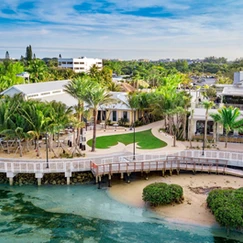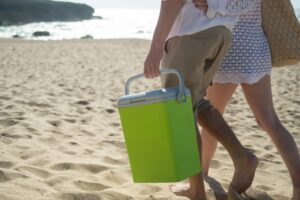Once you become a boat owner, you know you’ve achieved something significant in your life. But owning a boat is not like owning a regular, everyday accessory. It requires a certain level of responsibility and commitment to keep this prized possession in top shape. No matter the size of your boat, there are certain onboard safety devices and checks you should always do before you take to the open water.
If you plan on taking passengers out on your boat, this only ups the stakes when it comes to liability and responsibility. Learn how to be a responsible boat owner and skipper by closely following this boat safety checklist and other top tips.

A Boat Safety Checklist For Guaranteed Smooth Cruising
Whether you’re taking your boat out for a day of casual cruising, wakeboarding, water-skiing, or fishing, you’ll need to ensure she’s equipped with all the necessary safety gear before you set off. Even if it’s just a quick trip on the water, you can never be too prepared.
The U.S. Coast Guard outlines different federal requirements for different items onboard each vessel. So make sure you are up-to-speed with the prescribed safety gear and checks for your particular boat. By committing to boat safety standards, you can keep yourself out of trouble with the law. You can also ensure you and your passengers are safe at all times, come rain or shine.
Here are the must-have safety items your boat should carry:
1. PFDs (Personal Flotation Devices)
Also known as lifejackets, you get three different types of PFDs: type I, II, and III. You should have a PFD available for every person on board your boat before you set off into open water. This includes people you may be towing behind your boat on a wakeboard, water tube, or waterski.
Remember that children under the age of 12 must wear a PFD when the vessel is moving. In the case of emergency or bad weather, always instruct your passengers to put on their lifejackets. You don’t have to wear a PFD when the vessel is moving if you are over the age of 12. But if you prefer to be pre-emptive about safety, you can ask your passengers to put life jackets on before you leave the dock/port.
Make sure that your PDFs are up-to-standard and in good condition. If you store them on your boat, ensure they are covered in a protected area to keep them in top condition.
2. Flotation Devices
Another important safety item to keep on your boat at all times is a Type IV throwable floatation device. Depending on the size of your boat and how many passengers you can accommodate, it’s always wise to keep more than one onboard. By law, you are only required to have one.
Throwable flotation devices are usually in the form of a water cushion or ring buoy and must be attached to the boat with a rope. The rope must be in good condition in order to pull a person back towards the boat if they fall into the water.
3. A Visual Signaling Device
When it comes to visual signaling devices, these are very specific to the type and size of the vessel you own. Requirements also tend to be specific to the state in which you are boating. But these are the most common stipulations:
Vessels under 16 feet in length must carry flares or nighttime signals
Vessels over 16 feet must carry visual signaling devices for both day and night use
Flares are available in the form of pyrotechnics, and show up as orange or white smoke, or aerial light flares. You can choose between self-launching flares or a flare gun. Nighttime devices include strobe lights. Flags can also be used during the day to signal distress.
4. A Sound Signaling Device
A sound signaling device is usually required in instances of thick fog or impaired visibility. The reason why sound-signaling devices are important is that they can be used during the day or night if you run into trouble.
Most devices include portable horns, fixed horns, and whistles. However, larger boats over 39 feet in length must carry a bell to signal at regular intervals in the case of impaired visibility.
5. A Fire Extinguisher
The requirements for fire extinguishers differ depending on vessel type and size. But as a general rule of thumb, make sure that boats under 26 feet carry at least one extinguisher (B-1). Boats over 26 feet must carry at least two B-1 extinguishers or just one B-2 extinguisher.
Make sure you know how to handle and trigger a fire extinguisher in case you may need it! You can also brief your passengers on how to operate one so that they are well-prepared before you take to the water.
Other Important Boat Safety Tips
If you want to play it safe and make sure your boat is fully equipped for all situations, here are a few safety items to keep onboard:
- A VHF radio device to call for assistance if your cellphone is out-of-range
- A first-aid kit that includes all the medical basics, plus seasickness medication
- Bailing devices in the case of a boat leakage
- A large, heavy-duty flashlight
- A weather reporting system in order to stay abreast of quickly changing weather
- Paddles or boat oars in case of engine failure
- A large knife to cut rope, line, or fishing tackle where necessary
- A decent supply of fresh drinking water
Of course, the size of your boat will determine how many additional safety items you need. But, as mentioned, you can never be too prepared when you’re out on the open water.
Looking to Become a Boat Owner?
Want to become a boat owner, but don’t want to be tied down by the maintenance and expense that goes with owning a boat? Then our boat memberships are just right for you.
At Gulfstream Boat Club we offer exclusive boat owner membership plans to suit your style and budget. If the idea of ”trying before buying” sounds appealing to you, learn more about our memberships today and don’t forget to save this boat safety checklist!


